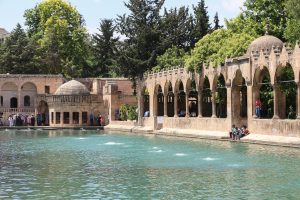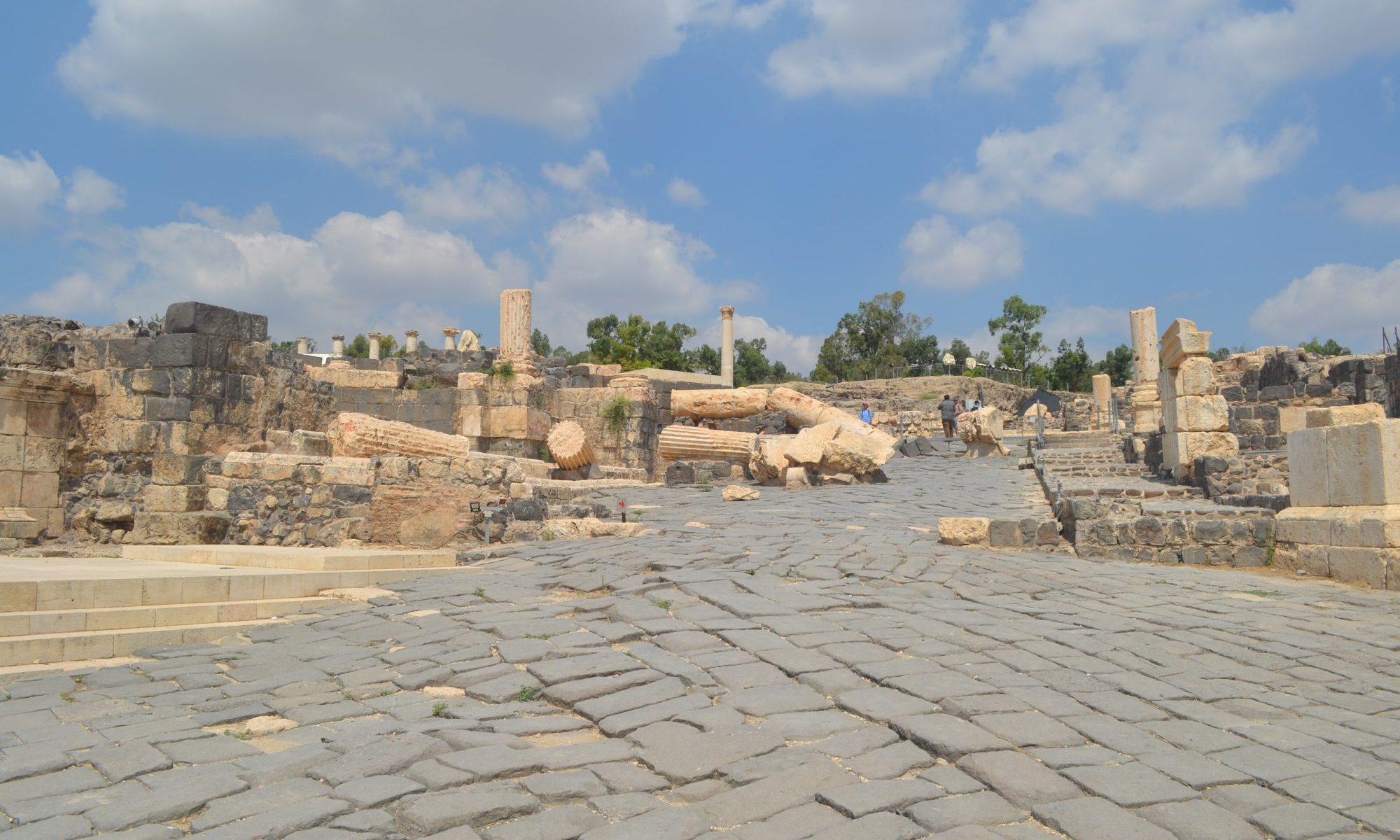As part of my research on Holy Land pilgrimage this year, I’ve been re-reading and translating the most significant accounts of early Christian travel in the region. One of those texts is Egeria’s account of her travels. Egeria was a Latin-writing traveller from the western Mediterranean who travelled in Sinai, Palestine, Syria, and Asia Minor between 381 and 383 CE. When she arrived in Constantinople at the end of her travels in the Holy Land — but before setting off again for Ephesus — she wrote an account of her journey to her “sisters” back home. The resulting text is a sort of extended epistolary narrative rich with details about her visits to holy sites.
Recently, I’ve been focusing on descriptions in pilgrimage literature of fountains, springs, and wells as part of an examination of how such places demonstrated the authenticity of holy sites, past epiphanies, and on-going divine presence. Egeria has some fascinating descriptions of springs and wells. One my favorite descriptions occurs when she describes her visit to Edessa in Roman Syria — modern Urfa in Turkey. While there, the Bishop of Edessa shows Egeria the palace of the 1st-century King Abgar, who was famous in Egeria’s day for his legendary correspondence with Jesus, original copies of which Egeria reports to have been shown by the bishop at the gates of the city (19.16-19). According to the story reported by Egeria, the Lord sent King Abgar a letter promising that no enemy would enter the gate of the city. When the Persians later besieged Edessa, Abgar took the Lord’s letter to the gate of the city and prayed, which caused the Persians to retreat in darkness. The Persians did not give up easily, however, and they cut off the water supply to Edessa. Egeria reports that on the very day the water was cut off, God caused a spring to flow out of the palace (19.7-13).
Egeria offers further, intriguing details about the spring and its fish, which, I think have been misapprehended by the most recent English translations, which is too bad, because I really wanted them to be correct! Egeria reports: Ibi erant fontes, piscibus pleni, quales ego adhuc nunquam vidi, id est tantae magnitudinis et vel tam perlustres aut tam boni saporis (19.7. Latin text: Franceschini and R. Weber, 1965). John Wilkinson, in the most widely used English translation renders the sentence “…[We] saw the pools with fish in them. I have never seen fish like them, they were so big , so brightly colored, and tasted so good” (Wilkinson, Egeria’s Travels 1971/2002: 133). Gingras’ translation is very similar: “fish of such great size, of such great luster, and of such good taste.” (Egeria: Diary of a Pilgrimage. 1970:78). I really wanted Egeria to eat the fish at Edessa, in part because it is such a great image! However, the Latin text is ambiguous as to whether it is the fish or the springs that Egeria found tasty – both the springs (fontes) and fish (pisces) are masculine plurals. In fact, John Bernard in his 1896 translation for the Palestine Pilgrims Texts leaves the English as ambiguous as the Latin.
However, Egeria’s descriptions of other springs shows that she tastes them and comments on them. In fact, as I hope to show in a forthcoming paper, her comments on their taste and clarity are indicative of their holiness and authenticity. While the taste of the fish could be indicative of such holiness, and thus also supportive of my paper’s point, Egeria exhibits a pattern of tasting springs elsewhere in her text. So, I was curious how Pierre Maraval had translated the text in his widely used French translation. As it turns out, Maraval appears to agree that Egeria tastes the water not the fish, translating: “il y avait là des fontaines pleines de poissons, telles que je n’en avais encore jamais vues tant elles étaitent vastes, tant leur eau était limpide et d’un gôut excellent.” P.Maraval, Égerie: Journal de voyage. ( 1982) 207. Here, Maraval inserts “eau/ water” into the second part of the line to make clear what Egeria tasted. As Maraval indicates in his notes, the fish in the pools were considered sacred in pre-Christian times as they were after the Islamic conquest. In fact, pools still exist at Edessa/Urfa and they contain fish that are considered sacred, as Segal describes in his study Edessa: The Blessed City (Oxford: Clarendon Press, 1970) 2. The pools can be seen in the more recent photo below and the fish can be seen in the video. So, while I really love the image of Egeria commenting on how tasty the fish were at the pools in the palace of Edessa, I don’t think she ate them. Rather, she tasted of the spring bought forth by the Lord, and its delicious taste was an indicator of its sanctity.

